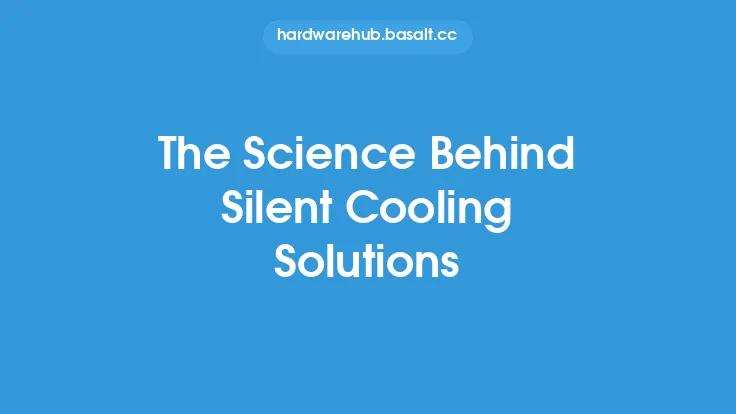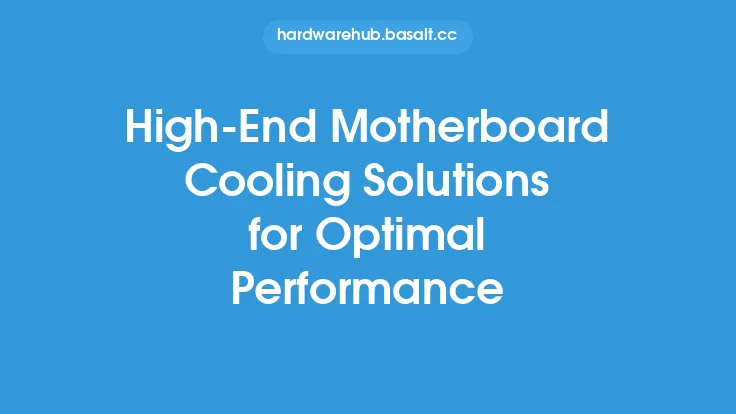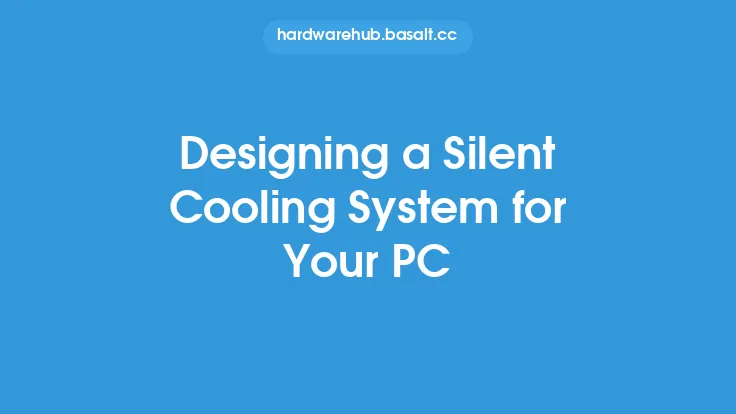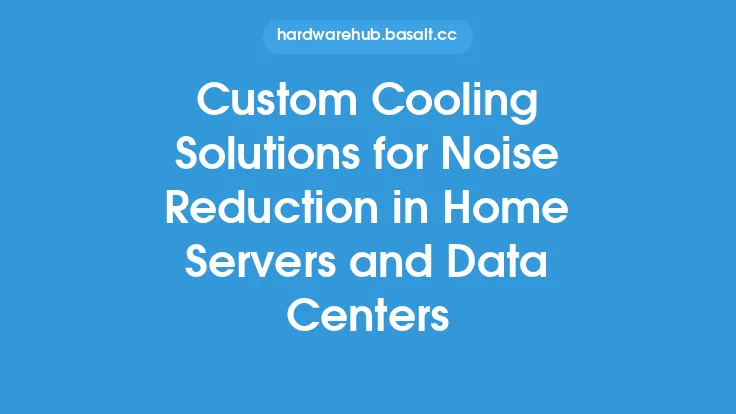When it comes to workstations, cooling is a critical aspect that can significantly impact performance, reliability, and overall user experience. Silent cooling solutions have become increasingly popular in recent years, especially among professionals who require a quiet working environment. In this article, we will delve into the world of silent cooling solutions for workstations, exploring the various options available, their characteristics, and the factors to consider when selecting the best solution for your needs.
Introduction to Silent Cooling Solutions
Silent cooling solutions are designed to minimize noise levels while maintaining optimal cooling performance. These solutions can be particularly beneficial for workstations, where noise can be a distraction and impact productivity. There are several types of silent cooling solutions available, including air-based, liquid-based, and hybrid systems. Each type has its strengths and weaknesses, and the choice of solution depends on various factors, including the workstation's configuration, usage patterns, and environmental conditions.
Air-Based Silent Cooling Solutions
Air-based silent cooling solutions rely on fans and heat sinks to dissipate heat from the workstation's components. These solutions are often less expensive than liquid-based solutions and are relatively easy to install. However, they can be less effective at high temperatures and may not be suitable for workstations with high-power components. Some popular air-based silent cooling solutions include:
- Fanless heat sinks: These heat sinks use a large surface area to dissipate heat and do not require fans, making them extremely quiet.
- Low-RPM fans: These fans operate at lower speeds than standard fans, reducing noise levels while still providing adequate airflow.
- Silent fan controllers: These controllers regulate fan speed to minimize noise levels while maintaining optimal cooling performance.
Liquid-Based Silent Cooling Solutions
Liquid-based silent cooling solutions, also known as liquid cooling systems, use a liquid coolant to absorb heat from the workstation's components and transfer it to a radiator, where it is dissipated. These solutions are often more effective than air-based solutions and can be used in workstations with high-power components. However, they can be more expensive and require more maintenance than air-based solutions. Some popular liquid-based silent cooling solutions include:
- Closed-loop liquid cooling systems: These systems use a sealed loop to circulate the coolant and are relatively easy to install.
- Custom liquid cooling systems: These systems require more expertise to install and maintain but offer greater flexibility and customization options.
- Hybrid liquid cooling systems: These systems combine liquid cooling with air cooling to provide optimal performance and quiet operation.
Hybrid Silent Cooling Solutions
Hybrid silent cooling solutions combine air-based and liquid-based cooling technologies to provide optimal performance and quiet operation. These solutions can be more expensive than air-based or liquid-based solutions but offer greater flexibility and customization options. Some popular hybrid silent cooling solutions include:
- Air-liquid hybrid systems: These systems use a combination of fans and liquid cooling to provide optimal cooling performance and quiet operation.
- Phase change cooling systems: These systems use a phase change material to absorb heat and transfer it to a radiator, where it is dissipated.
Factors to Consider When Selecting a Silent Cooling Solution
When selecting a silent cooling solution for your workstation, there are several factors to consider, including:
- Cooling performance: The solution should be able to maintain optimal temperatures for your workstation's components.
- Noise level: The solution should be quiet enough to meet your requirements, typically measured in decibels (dB).
- Cost: The solution should be within your budget, considering the initial cost, maintenance costs, and any potential upgrades.
- Maintenance: The solution should be easy to maintain and repair, with minimal downtime and hassle.
- Compatibility: The solution should be compatible with your workstation's components and configuration.
- Scalability: The solution should be able to adapt to changing cooling requirements as your workstation's configuration evolves.
Installation and Maintenance of Silent Cooling Solutions
Proper installation and maintenance are critical to ensuring the optimal performance and longevity of your silent cooling solution. This includes:
- Following the manufacturer's installation instructions and guidelines.
- Ensuring proper airflow and cable management to minimize noise and optimize cooling performance.
- Regularly cleaning dust and debris from the cooling system to prevent overheating and reduce noise levels.
- Monitoring temperatures and adjusting the cooling system as needed to maintain optimal performance.
- Upgrading or replacing components as needed to ensure the cooling system remains effective and quiet.
Conclusion
Silent cooling solutions are a critical component of modern workstations, providing a quiet and reliable computing environment. By understanding the various types of silent cooling solutions available, including air-based, liquid-based, and hybrid systems, you can make an informed decision when selecting the best solution for your needs. Remember to consider factors such as cooling performance, noise level, cost, maintenance, compatibility, and scalability when choosing a silent cooling solution. With proper installation and maintenance, your silent cooling solution will provide years of reliable and quiet operation, helping you to stay focused and productive.





